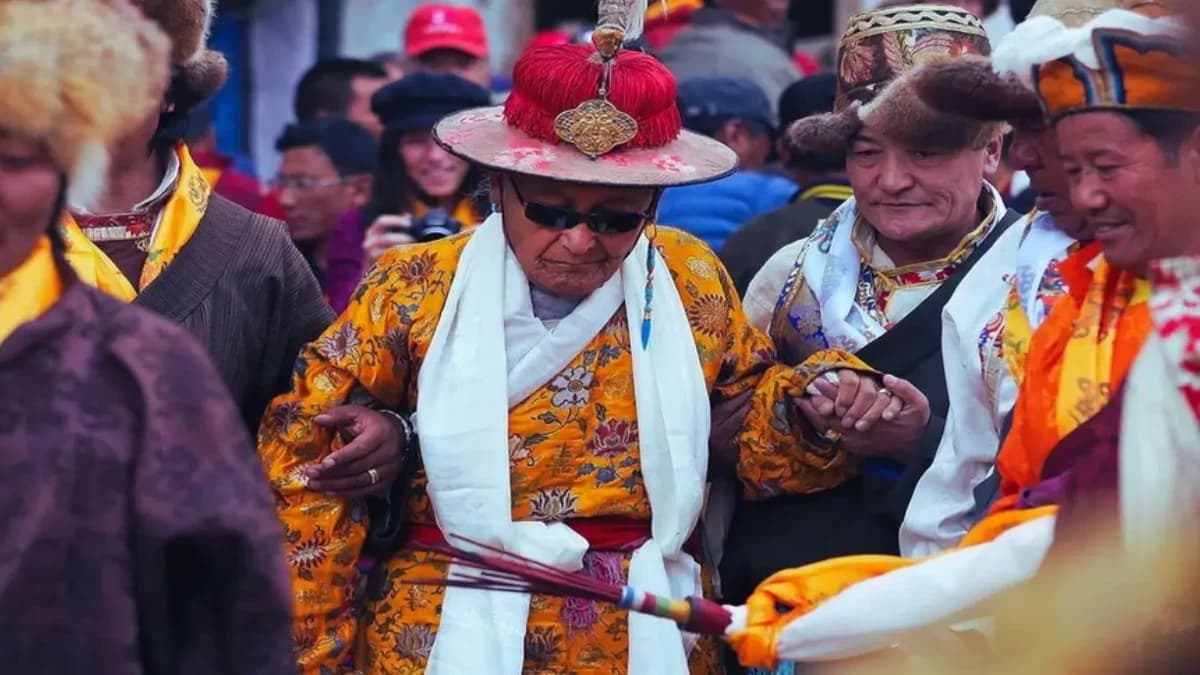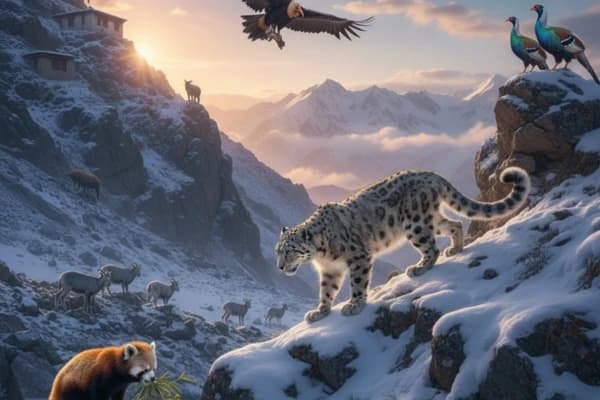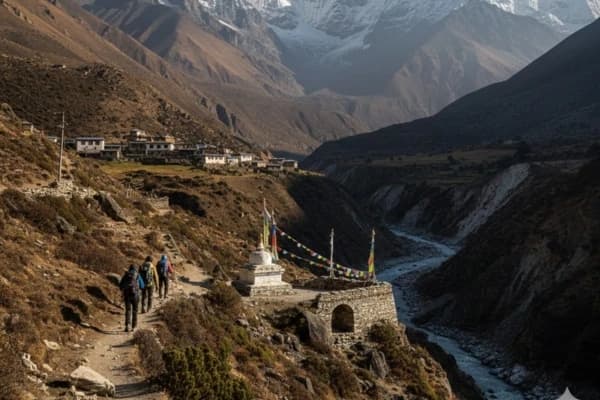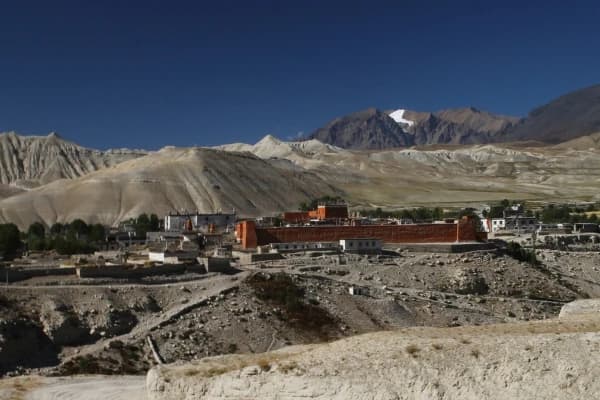Jigme Dorje Palbar Bista was the last King of Mustang and is still one of the most famous people in Nepal’s Himalayan history. He was the final ruler of this remote and culturally rich place and helped keep Mustang’s special traditions, religious practices, and semi-independent status alive.
Lo Manthang, the capital of the kingdom, was the center for both politics and religion, and under Bista’s rule, it stayed a strong symbol for the local people. This blog looks at his life, time as king, and the lasting impact he left in Mustang.
Historical Context of Mustang
Mustang, also called the Hidden Kingdom of Nepal, has always amazed travelers, historians, and researchers. Because it’s so far north in the Himalayas and next to Tibet, it could run itself mostly on its own for many years. Knowing Mustang’s history helps us understand why Jigme Dorje Palbar Bista was such an important cultural and political leader.
Mustang Before Jigme Dorje Palbar Bista
Before Bista became king, Mustang already had a strong political system run by the Lo Dynasty. The king and his family ruled the main areas, while some parts of lower Mustang were managed by local leaders.
Mustang kept a good relationships with both Nepal and Tibet, handling diplomacy and trade carefully. Because it was semi-independent, the kingdom could keep its Tibetan Buddhist traditions, language, and culture, acting like a cultural bridge in the Himalayas.
If you want to experience the living history of Mustang while exploring its ancient monasteries, caves, and royal legacy, Nepal Gateway Trekking offers guided trips that bring this cultural treasure to life.
Upper vs Lower Mustang
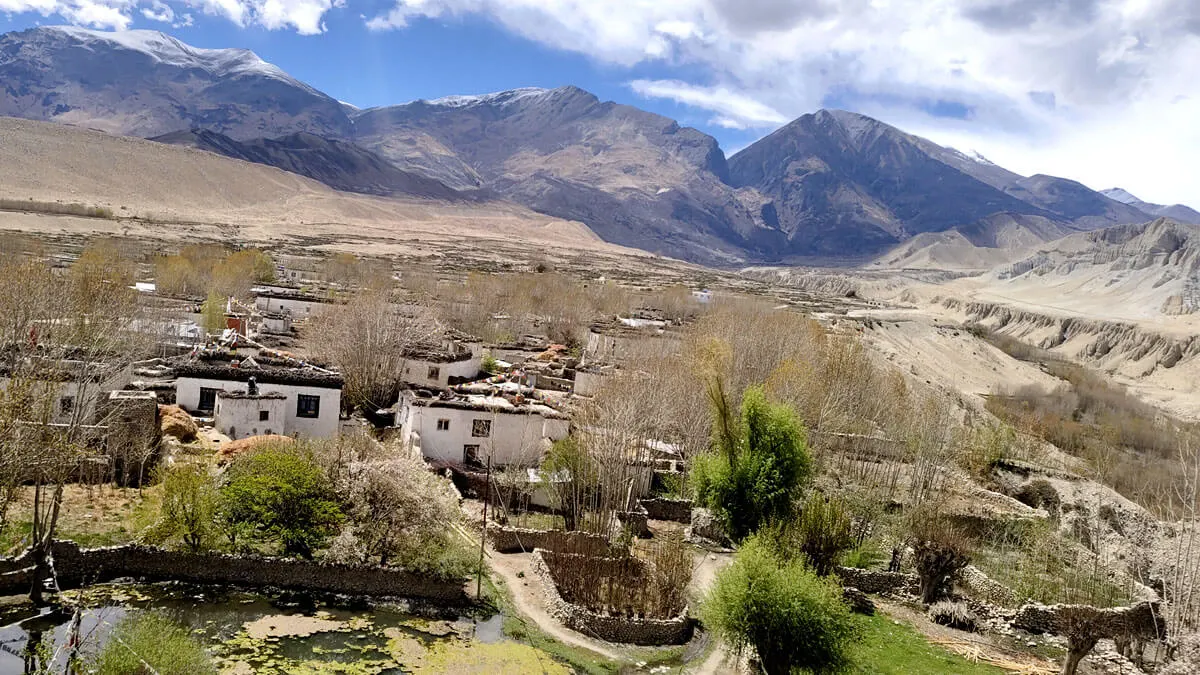
Mustang is usually split into Upper and Lower regions, and each has its own way of being governed and its own cultural traditions.
Upper Mustang (Lo Manthang and core areas):
- Ruled directly by the king and his family
- Was the main center for culture, religion, and politics
- Had the royal palace and important monasteries
Lower Mustang:
- Made up of semi-independent areas run by local leaders
- Affected by Nepal’s central government and trade
- The king wasn’t as involved in the day-to-day running
Territorial Significance
Upper Mustang stayed as the main center of the king’s power, while Lower Mustang focused on trade, cultural exchange, and connecting the region. During his time as king, Bista mostly controlled Upper Mustang and made sure the kingdom’s traditions and government stayed strong.
Mustang’s Role in Himalayan Trade
Mustang has always been crucial for the Himalayan trade, mainly for the salt trade with Tibet. The trade routes through Lower Mustang connected the Mustang kingdom to major markets, allowing culture and goods to flow into the city.
King Bista oversaw trade and stayed connected with traders, which helped keep Mustang semi-independent and maintain its economy in the region.
Upper Mustang Trek with Yara - 16 Days
Biography and Early Life of Jigme Dorje Palbar Bista
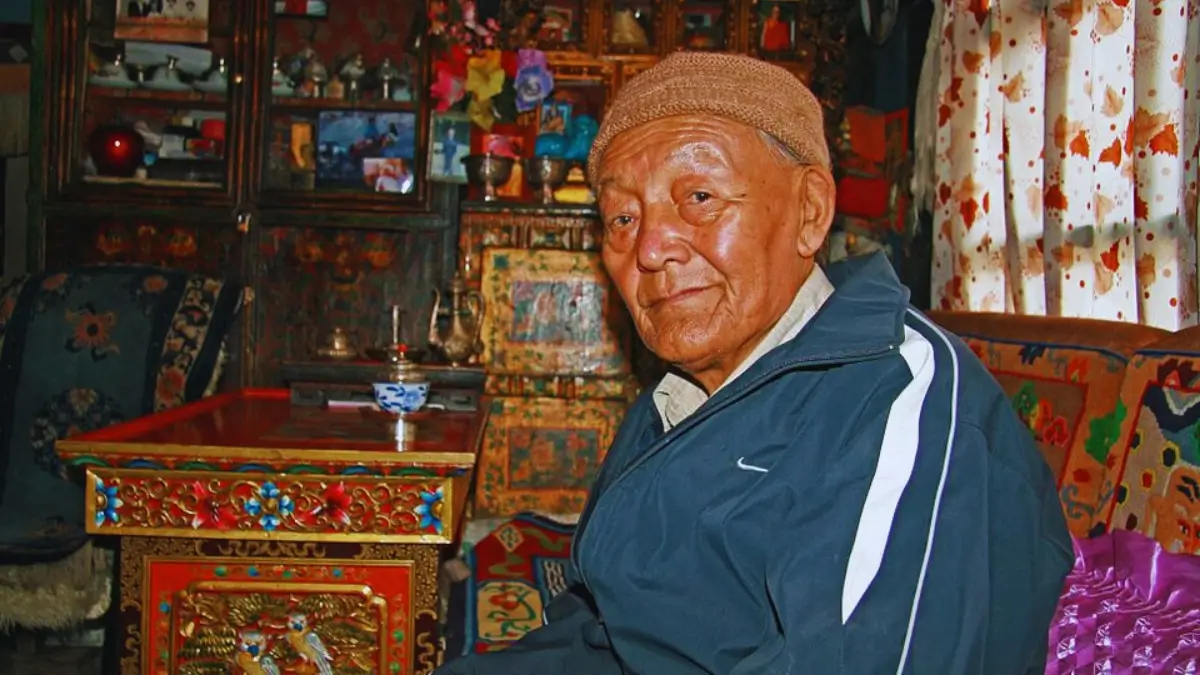
Bista was born in the remote Lo Manthang palace and grew up surrounded by the area’s spiritual and cultural traditions. From a young age, he experienced religious ceremonies, local festivals, and the Himalayan surroundings, all of which shaped how he saw the world and his strong bond with Mustang’s heritage.
Birth and Childhood
Jigme Dorje Palbar Bista was born in 1930 in Lo Manthang, the center of Upper Mustang, as part of the Lo Dynasty. From a young age, he was surrounded by Tibetan Buddhism, Himalayan culture, and the special traditions of the Mustang Royal family. Bista learned about the duties of being a king and the responsibility to protect his family’s cultural heritage.
Education and Succession
Bista’s education mixed formal lessons with informal learning based on Buddhist and Tibetan traditions. He was guided by scholars, monks, and older royal family members, getting ready for his role as king. When he became king, he followed the Lo Dynasty’s usual traditions, focusing on being ready to run the kingdom.
Coronation and Reign as The Last King of Mustang
When Jigme Dorje Palbar Bista became king, it marked an important time in Mustang’s history. His rule focused on keeping traditions, protecting culture, and staying involved with bigger political events in Nepal.
Ascension to the Throne
Jigme Dorje Palbar Bista’s coronation on March 5, 1964, followed Mustang’s special royal customs. The ceremonies and rituals showed the kingdom’s Buddhist traditions and royal rules. When he became king, Bista gained political power and also became the protector of Mustang’s culture, making sure its identity and traditions were kept alive.
Governance and Role as King
As king, Bista was very involved in running Upper Mustang, but still respected that Lower Mustang had some independence. He was known for leading with both authority and care for culture.
Besides governing, he also acted as a cultural and spiritual guide for protecting local traditions and making sure festivals, monasteries, and royal customs continued in his generation.
Relationship with the Nepal Government
Because Mustang was semi-independent, it needed a careful relationship with Nepal’s central government. Bista handled political changes while keeping the kingdom’s identity unique. During his reign, he worked to protect Mustang’s autonomy, culture, and economic stability even as neighbouring countries around were changing.
Mustang and Nepal’s Political Transition
The early 2000s brought major political changes, which also saw through the Nepal monarchy abolition. Mustang’s unique position was impacted, and Bista’s role evolved in response.
The Bista Title and Its Significance
The royal title “Bista” stood for authority, leadership, and cultural responsibility in Mustang. It wasn’t just a political title; it also showed heritage, family lineage, and spiritual duty, representing the identity of the Lo Dynasty and its people.
Abolition of the Mustang Monarchy in 2008
When Nepal became a republic in May 28, 2008, it officially ended the country’s monarchy that had lasted for centuries. For Mustang, this meant the royal government ended, taking away Bista’s official power as king, but his cultural and symbolic influence stayed strong.
Symbolic Authority After 2008
Even after the monarchy ended, people in Mustang still respected Jigme Dorje Palbar Bista. He kept being a cultural leader, going to festivals, giving advice to communities, and keeping alive traditions that the Lo Dynasty had looked after for hundreds of years.
Personal Life of Bista
While much of Bista’s life was devoted to governance and culture, his personal life reflected the royal traditions of Mustang.
Marriage
Jigme Dorje Palbar Bista’s marriage followed old royal traditions, and his wife, Rani Sahiba Sidol Palbar Bista, helped a lot with the monarchy and cultural events. She was a noblewoman from Shigatse, Tibet, and married Bista in the 1950s. Together, they showcased the ongoing royal heritage of Mustang.
Family and Ancestry
Bista belonged to the Lo Dynasty, which had family ties with Tibet and the Himalayan region. Bista’s family helped preserve Mustang’s unique culture and showed how the kingdom connected Nepal and Tibet.
Legacy of Jigme Dorje Palbar Bista
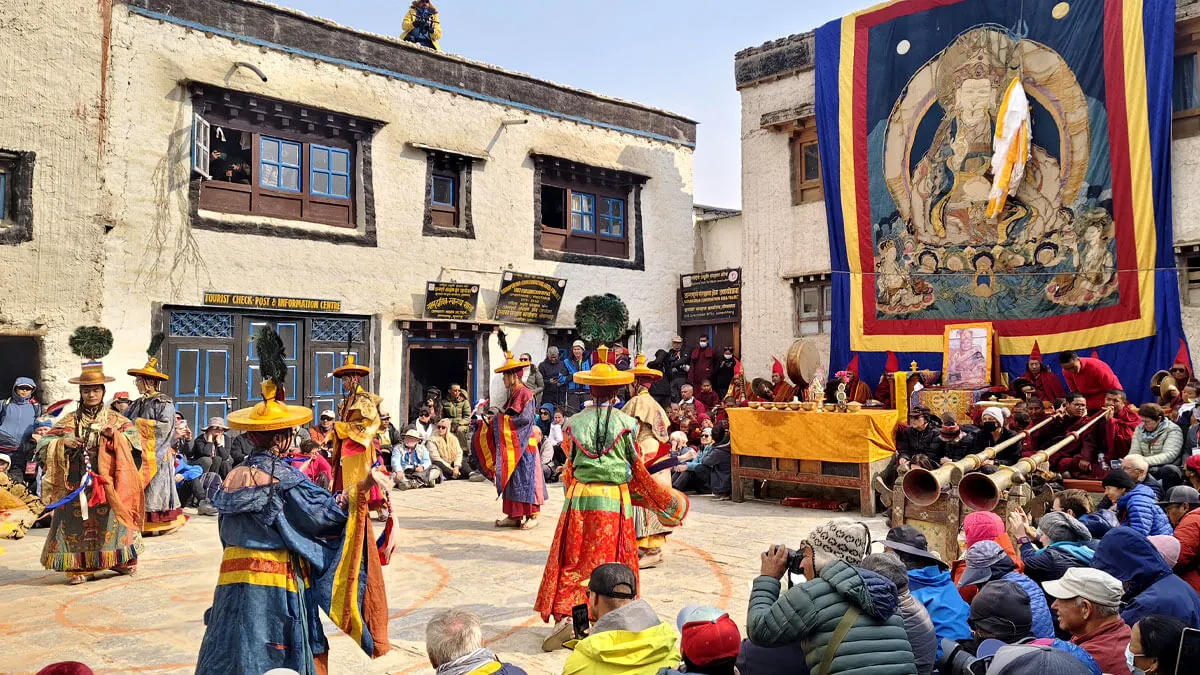
Bista’s legacy goes way beyond being a political leader. He is remembered as someone who protected Mustang’s culture, religion, and identity.
Honours and Recognition
During his life, Jigme Dorje Palbar Bista received several honors for his work in protecting culture, leading well, and keeping Mustang’s semi-independent traditions alive. He received the King Birendra Coronation Medal in Feburary 24, 1975 from King Birendra of Nepal, recognizing his role and status, and later the King Gyanendra Coronation Medal in June 04, 2001 from King Gyanendra, honoring his contributions even more.
Cultural Preservation
Bista actively helped monasteries, religious festivals, and Tibetan Buddhism by paying for renovations, organizing and taking part in local ceremonies, and guiding the community to keep their traditions alive.
Symbol of Mustang’s Identity
Bista is still seen as the face of Mustang’s identity, showing resilience, cultural pride, and continuity. For both locals and visitors, Bista stands for the spirit of a kingdom that has lasted through centuries of political and social change.
Death and Funeral of The Bista (2016)
Jigme Dorje Palbar Bista, the last king of Mustang, passed away on December 16, 2016, in Kathmandu at the age of 86. His death marked the end of an era in Mustang’s history, as he had ruled the region for over forty years and continued to be a respected cultural and spiritual leader even after the monarchy ended in 2008.
Royal Funeral in Lo Manthang
Jigme Dorje Palbar Bista’s funeral followed traditional Tibetan Buddhist and Mustang royal customs. It began in Kathmandu with prayers, monk chants, and rituals. Then, it continued in Lo Manthang with processions and tributes from locals and important guests.
His son, Jigme Sinki Palbar Bista, and other dignitaries were present to honor the last king’s life and mark the end of Mustang’s royal era.
End of a Dynasty
Although Bista’s death officially ended Mustang’s monarchy, the culture, festivals, and traditions he protected still thrive, keeping the kingdom’s heritage alive.
Mustang After the Last King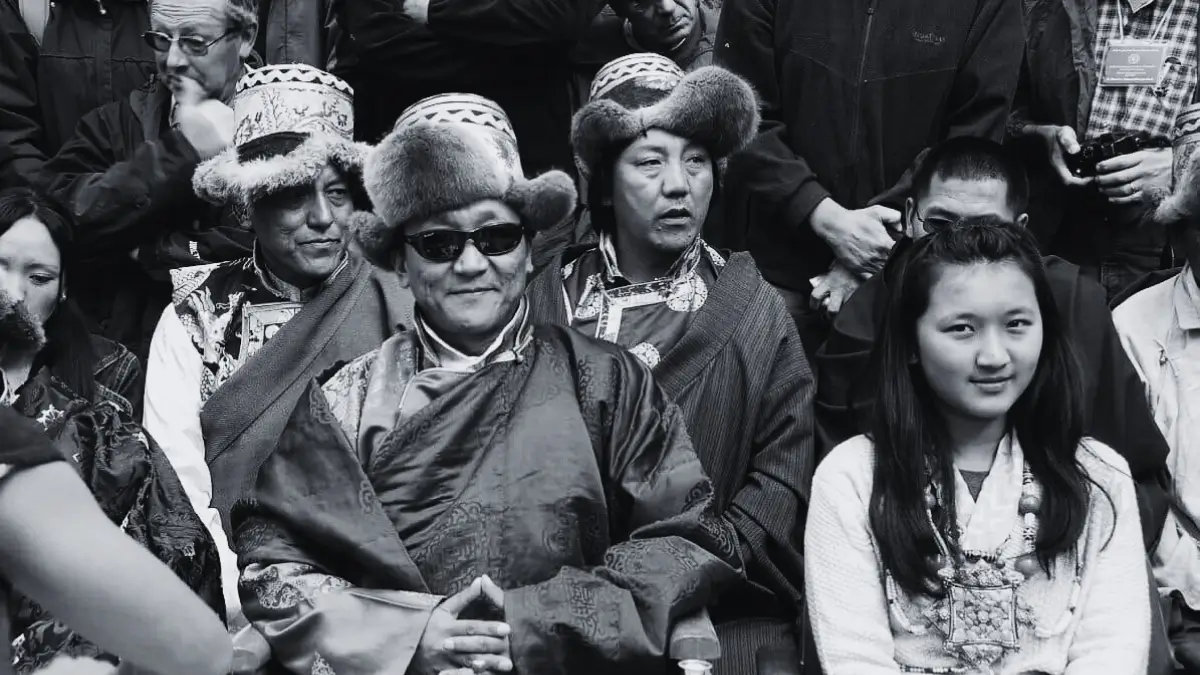
Even after the monarchy officially ended in 2008, Mustang still keeps its cultural and historical identity alive. Whether that be through culture, festivals or generations old traditions in the name of the late king.
Cultural Continuity
Bista’s legacy is honored through the continuation of Mustang’s cultural and religious traditions. The famous celebration of the Tiji Festival marks the victory and triumph of good, featuring colorful dances and rituals. His support helped these customs continue, ensuring the preservation of Mustang’s spiritual heritage.
Tourism and Heritage
Lo Manthang has turned into a cultural hotspot for tourists and trekkers. The Upper Mustang Trek is an experience of the kingdom’s history, monasteries, and festivals for the trekkers. Connecting them with the legacy of Jigme Dorje Palbar Bista.
Why Jigme Dorje Palbar Bista Still Matters?
Bista’s story isn’t just about political leadership and being a King of Mustang, it’s about cultural survival and keeping the identity of Mustang.
Symbol of Resilience
Bista represents the enduring spirit of Mustang, which stood the test of time till his reign. His life shows locals and visitors that cultural pride and tradition can survive political and societal changes.
Inspiration for Preservation
Bista’s story inspires people to protect and celebrate Mustang’s unique traditions. His legacy continues to guide cultural preservation projects and tourism in the Mustang region.
Final Thoughts
Jigme Dorje Palbar Bista played a key role in protecting the kingdom’s heritage, culture, and semi-independent identity within Nepal. From his early life in Lo Manthang to leading during political changes, his reign highlights Mustang’s resilience and the importance of its royal family.
Today, his legacy lives on through cultural festivals, heritage tourism, and the pride of the Mustang people. Visiting Upper Mustang gives a special chance to connect with the history and traditions that Bista devoted his life to preserving. Contact Nepal Gateway Trekking to explore the kingdom ruled by Jigme Dorje Palbar Bista.
FAQs about Jigme Dorje Palbar Bista
Who was Jigme Dorje Palbar Bista?
Jigme Dorje Palbar Bista was the last King of Mustang, a semi-independent Himalayan kingdom, and an important figure in preserving the region’s culture and traditions.
When was Jigme Dorje Palbar Bista born?
He was born in 1930 in Lo Manthang, Upper Mustang.
What does the title "Bista" mean in Mustang?
The title represents royal authority, cultural leadership, and the heritage of the Lo Dynasty.
Was Jigme Dorje Palbar Bista officially recognized by Nepal?
Yes, as the semi-independent ruler of Mustang, he was recognized by the Nepalese government until the monarchy ended in 2008.
Who was the wife of Jigme Dorje Palbar Bista?
His wife was Rani Sahiba Sidol Palbar Bista. With Bista, she participated in cultural and ceremonial duties following royal traditions.
How did the monarchy end in Mustang?
The monarchy ended with Nepal’s transition to a republic in 2008, officially dissolving royal authority while retaining cultural respect for the Bista family.
Where is Mustang’s royal palace located?
The royal palace is located in the center of Lo Manthang, the walled capital of Upper Mustang.
